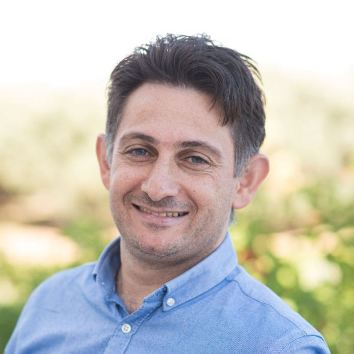Novel Biomaterials for Tissue Engineering 2018
A special issue of International Journal of Molecular Sciences (ISSN 1422-0067). This special issue belongs to the section "Materials Science".
Deadline for manuscript submissions: closed (25 April 2018) | Viewed by 208519
Special Issue Editor
Interests: biosensors; bioelectronics; biomaterials; tissue engineering; biosurfaces; biointerfaces
Special Issues, Collections and Topics in MDPI journals
Special Issue Information
Dear Colleagues,
This Special Issue, “Novel Biomaterials for Tissue Engineering”, will cover a selection of recent research topics and current review articles in the field biomaterials and for tissue engineering and regeneration purposes. Experimental papers, up-to-date review articles, and commentaries are all welcome.
The concept of regenerating tissues, with properties and functions that mimic natural tissues, has attracted significant attention in recent years. It provides potential solutions for many diseases treatment and other healthcare problems. To fully realize the potential of the approach, it is crucial to have a rational biomaterial design to create novel scaffolds, and other materials systems suitable for tissue engineering, repair and regeneration. Research advances on the topic include the design of new biomaterials and their composites, the scaffold fabrication via subtractive and additive manufacturing approaches, the development of implantable scaffolds for disease monitoring, diagnostics, and treatment, as well as the understanding of cells-biomaterial scaffolds interaction.
Dr. Emmanuel Stratakis
Guest Editor
Manuscript Submission Information
Manuscripts should be submitted online at www.mdpi.com by registering and logging in to this website. Once you are registered, click here to go to the submission form. Manuscripts can be submitted until the deadline. All submissions that pass pre-check are peer-reviewed. Accepted papers will be published continuously in the journal (as soon as accepted) and will be listed together on the special issue website. Research articles, review articles as well as short communications are invited. For planned papers, a title and short abstract (about 100 words) can be sent to the Editorial Office for announcement on this website.
Submitted manuscripts should not have been published previously, nor be under consideration for publication elsewhere (except conference proceedings papers). All manuscripts are thoroughly refereed through a single-blind peer-review process. A guide for authors and other relevant information for submission of manuscripts is available on the Instructions for Authors page. International Journal of Molecular Sciences is an international peer-reviewed open access semimonthly journal published by MDPI.
Please visit the Instructions for Authors page before submitting a manuscript. There is an Article Processing Charge (APC) for publication in this open access journal. For details about the APC please see here. Submitted papers should be well formatted and use good English. Authors may use MDPI's English editing service prior to publication or during author revisions.
Keywords
-
biomaterials
-
tissue engineering
-
tissue regeneration
-
scaffolds
-
bioprinting
-
biomaterial structuring
-
cell-biomaterial interaction
-
implantable scaffolds
Benefits of Publishing in a Special Issue
- Ease of navigation: Grouping papers by topic helps scholars navigate broad scope journals more efficiently.
- Greater discoverability: Special Issues support the reach and impact of scientific research. Articles in Special Issues are more discoverable and cited more frequently.
- Expansion of research network: Special Issues facilitate connections among authors, fostering scientific collaborations.
- External promotion: Articles in Special Issues are often promoted through the journal's social media, increasing their visibility.
- e-Book format: Special Issues with more than 10 articles can be published as dedicated e-books, ensuring wide and rapid dissemination.
Further information on MDPI's Special Issue polices can be found here.







